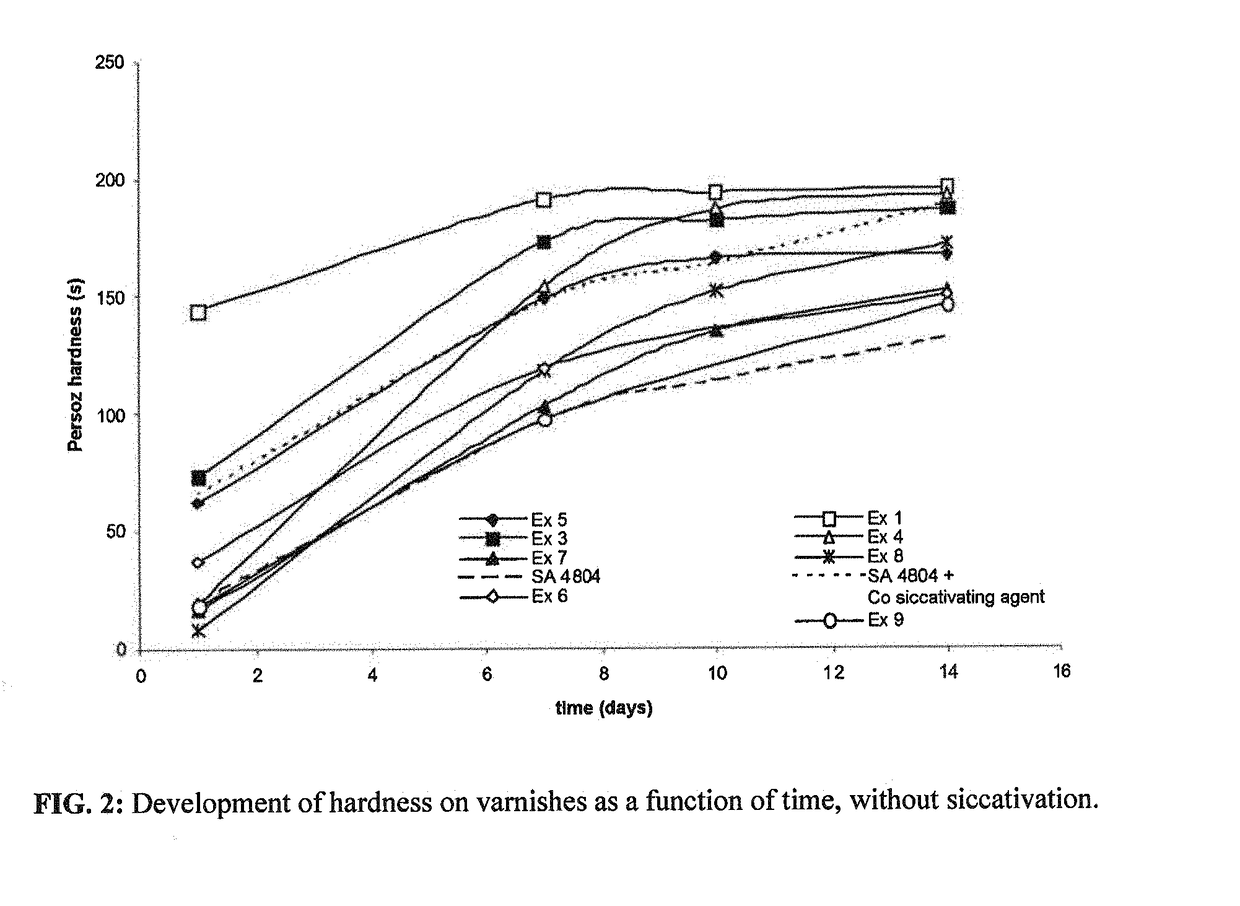Polyester resins based on fatty acids that have a short oil length, aqueous dispersions and associated coatings
a polyester resin and fatty acid technology, applied in the field of fatty acid-based polyester resins, can solve the problems of reducing the oil length, resins less readily dispersed in water with surfactants, and above all without solvents, and achieves the effects of reducing or zero short oil length, stable over time, and low yellowing evolution
- Summary
- Abstract
- Description
- Claims
- Application Information
AI Technical Summary
Benefits of technology
Problems solved by technology
Method used
Image
Examples
example 1
[0062]185.2 g of Pripol® 1009, 1453.3 g of pine oil rosin, 6 g of AOX-R (phenol sulfite) and 185.2 g of polyglycerol-3 are placed in a stirred, temperature-regulated 5-liter reactor, under a nitrogen atmosphere. The mixture is heated to 250-270° C. and the water of condensation is removed until an acid number of 6 mg KOH / g is obtained.
example 2
[0063]The same procedure as for Example 1 is used with the following products and amounts: 592.0 g of Pripol® 1009, 1034.0 g of pine oil rosin, 6 g of AOX-R (phenol sulfite) and 374.0 g of polyglycerol-3. The water of condensation is removed until an acid number of 4 mg KOH / g is obtained.
example 3
[0064]The same procedure as for Example 1 is used, but with the following products and amounts: 6.5 g of soybean fatty acid Nouracid® SZ35, 71.4 g of pine oil rosin and 22.0 g of polyglycerol-3. The water of condensation is removed until an acid number of 4 mg KOH / g is obtained.
PUM
| Property | Measurement | Unit |
|---|---|---|
| weight ratio | aaaaa | aaaaa |
| Tg | aaaaa | aaaaa |
| weight ratio | aaaaa | aaaaa |
Abstract
Description
Claims
Application Information
 Login to View More
Login to View More - R&D
- Intellectual Property
- Life Sciences
- Materials
- Tech Scout
- Unparalleled Data Quality
- Higher Quality Content
- 60% Fewer Hallucinations
Browse by: Latest US Patents, China's latest patents, Technical Efficacy Thesaurus, Application Domain, Technology Topic, Popular Technical Reports.
© 2025 PatSnap. All rights reserved.Legal|Privacy policy|Modern Slavery Act Transparency Statement|Sitemap|About US| Contact US: help@patsnap.com



